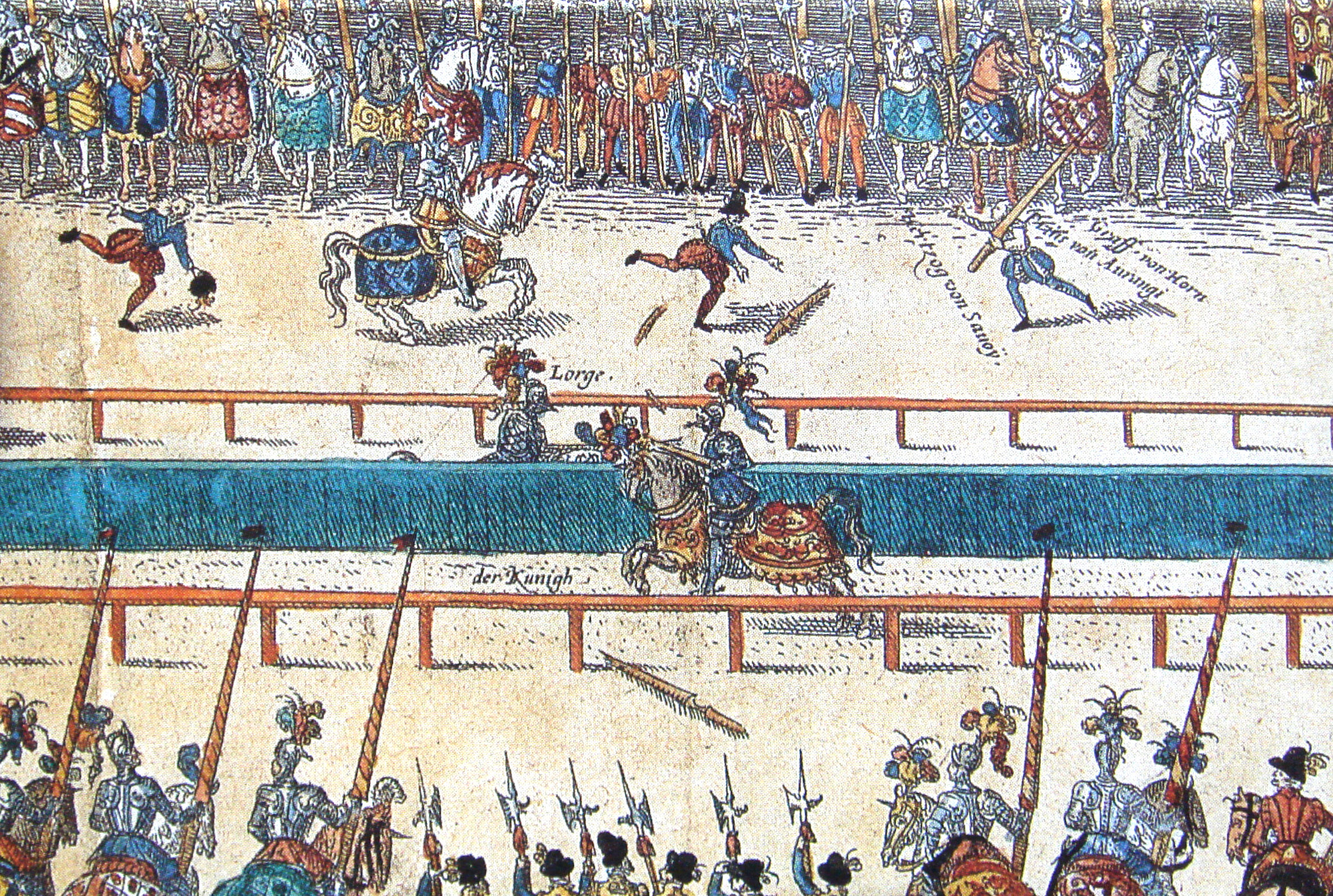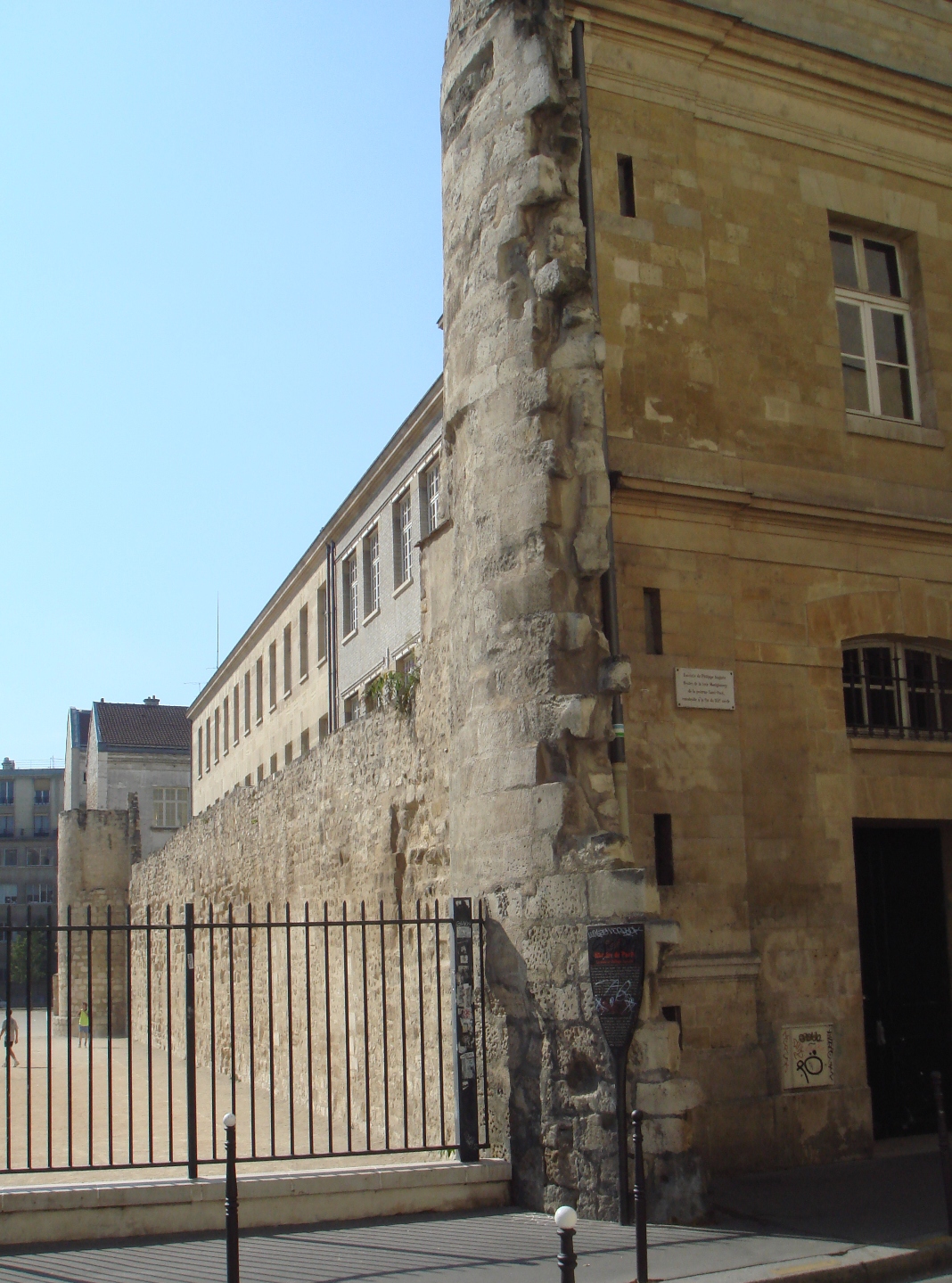Gabriel, Comte De Montgomery on:
[Wikipedia]
[Google]
[Amazon]
Gabriel de Lorges, Count of Montgomery, Lord of Lorges and Ducey (5 May 153026 June 1574), was a French nobleman of Scottish extraction and captain of the Scots Guard of King

 During the First War (1562–63) he fought for the Huguenots, capturing Bourges and leading several campaigns in his native Normandy. He led the defense of Rouen, and escaped the city just as it fell to the enemy.
He remained in France after the Peace of Amboise brought an end to the fighting. He took up arms again in 1567 when the wars of religion were renewed, and served under Condé in the major campaigns of 1567, 1568, and 1569.
Shortly after Condé's death at Jarnac in March 1569, Montgomery was tasked with restoring
During the First War (1562–63) he fought for the Huguenots, capturing Bourges and leading several campaigns in his native Normandy. He led the defense of Rouen, and escaped the city just as it fell to the enemy.
He remained in France after the Peace of Amboise brought an end to the fighting. He took up arms again in 1567 when the wars of religion were renewed, and served under Condé in the major campaigns of 1567, 1568, and 1569.
Shortly after Condé's death at Jarnac in March 1569, Montgomery was tasked with restoring  Montgomery returned to France with a fleet in an attempt to relieve the
Montgomery returned to France with a fleet in an attempt to relieve the
Henry II of France
Henry II (; 31 March 1519 – 10 July 1559) was List of French monarchs#House of Valois-Angoulême (1515–1589), King of France from 1547 until his death in 1559. The second son of Francis I of France, Francis I and Claude of France, Claude, Du ...
. He is remembered for mortally injuring Henry II in a jousting
Jousting is a medieval and renaissance martial game or hastilude between two combatants either on horse or on foot. The joust became an iconic characteristic of the knight in Romantic medievalism.
The term is derived from Old French , ultim ...
accident and subsequently converting to Protestantism
Protestantism is a branch of Christianity that emphasizes Justification (theology), justification of sinners Sola fide, through faith alone, the teaching that Salvation in Christianity, salvation comes by unmerited Grace in Christianity, divin ...
, the faith that the Scots Guard sought to suppress. He became a leader of the Huguenot
The Huguenots ( , ; ) are a Religious denomination, religious group of French people, French Protestants who held to the Reformed (Calvinist) tradition of Protestantism. The term, which may be derived from the name of a Swiss political leader, ...
s. In French-language contexts, his name is spelled Montgommery.
Career
On 30 June 1559, during a jousting match to celebrate the Peace of Cateau Cambrésis between Henry II and his longtimeHabsburg
The House of Habsburg (; ), also known as the House of Austria, was one of the most powerful dynasties in the history of Europe and Western civilization. They were best known for their inbreeding and for ruling vast realms throughout Europe d ...
enemies, and two major marriages, namely that of Marguerite, the king's sister, with the Duke of Savoy Emmanuel-Philibert, and that of Elisabeth, the king's eldest daughter, with Philip II, king of Spain, a splinter of wood from Montgomery's shattered lance
The English term lance is derived, via Middle English '' launce'' and Old French '' lance'', from the Latin '' lancea'', a generic term meaning a wikt:lancea#Noun">lancea'', a generic term meaning a spear">wikt:lancea#Noun">lancea'', a generi ...
pierced Henry's eye and entered his brain, fatally injuring him. From his deathbed Henry absolved Montgomery of any blame, before dying on 10 July 1559. However, finding himself disgraced, Montgomery retreated to his estates in Normandy
Normandy (; or ) is a geographical and cultural region in northwestern Europe, roughly coextensive with the historical Duchy of Normandy.
Normandy comprises Normandy (administrative region), mainland Normandy (a part of France) and insular N ...
. There he studied theology
Theology is the study of religious belief from a Religion, religious perspective, with a focus on the nature of divinity. It is taught as an Discipline (academia), academic discipline, typically in universities and seminaries. It occupies itse ...
and converted to Protestantism, making him an enemy of the state.

 During the First War (1562–63) he fought for the Huguenots, capturing Bourges and leading several campaigns in his native Normandy. He led the defense of Rouen, and escaped the city just as it fell to the enemy.
He remained in France after the Peace of Amboise brought an end to the fighting. He took up arms again in 1567 when the wars of religion were renewed, and served under Condé in the major campaigns of 1567, 1568, and 1569.
Shortly after Condé's death at Jarnac in March 1569, Montgomery was tasked with restoring
During the First War (1562–63) he fought for the Huguenots, capturing Bourges and leading several campaigns in his native Normandy. He led the defense of Rouen, and escaped the city just as it fell to the enemy.
He remained in France after the Peace of Amboise brought an end to the fighting. He took up arms again in 1567 when the wars of religion were renewed, and served under Condé in the major campaigns of 1567, 1568, and 1569.
Shortly after Condé's death at Jarnac in March 1569, Montgomery was tasked with restoring Jeanne d'Albret
Jeanne d'Albret (, Basque language, Basque: ''Joana Albretekoa''; Occitan language, Occitan: ''Joana de Labrit''; 16 November 1528 – 9 June 1572), also known as Jeanne III, was Queen of Navarre from 1555 to 1572.
Jeanne was the daughter of He ...
, the Huguenot queen of Navarre, to her territories in Béarn, which had been conquered by Catholic forces. He led a rapid campaign, which resulted in the destruction of a Catholic army at Orthez in August 1569.
Montgomery then, in early January, linked up with the survivors of the disastrous battle of Moncontour. The combined army, led by Coligny and the young princes of Condé and Navarre
Navarre ( ; ; ), officially the Chartered Community of Navarre, is a landlocked foral autonomous community and province in northern Spain, bordering the Basque Autonomous Community, La Rioja, and Aragon in Spain and New Aquitaine in France. ...
, fought the Catholics to a standstill at Arnay-le-Duc and imposed a favorable peace on the Crown.
He was one of the few leaders to survive the St. Bartholomew's Day massacre after a wounded Huguenot
The Huguenots ( , ; ) are a Religious denomination, religious group of French people, French Protestants who held to the Reformed (Calvinist) tradition of Protestantism. The term, which may be derived from the name of a Swiss political leader, ...
swam across the Seine
The Seine ( , ) is a river in northern France. Its drainage basin is in the Paris Basin (a geological relative lowland) covering most of northern France. It rises at Source-Seine, northwest of Dijon in northeastern France in the Langres plat ...
to warn him that rioting had begun. A price was put on his head, but he managed to escape to England
England is a Countries of the United Kingdom, country that is part of the United Kingdom. It is located on the island of Great Britain, of which it covers about 62%, and List of islands of England, more than 100 smaller adjacent islands. It ...
. The queen mother, Catherine de' Medici
Catherine de' Medici (, ; , ; 13 April 1519 – 5 January 1589) was an Italian Republic of Florence, Florentine noblewoman of the Medici family and Queen of France from 1547 to 1559 by marriage to Henry II of France, King Henry II. Sh ...
, asked Queen Elizabeth I
Elizabeth I (7 September 153324 March 1603) was Queen of England and Ireland from 17 November 1558 until her death in 1603. She was the last and longest reigning monarch of the House of Tudor. Her eventful reign, and its effect on history ...
for his extradition
In an extradition, one Jurisdiction (area), jurisdiction delivers a person Suspect, accused or Conviction, convicted of committing a crime in another jurisdiction, into the custody of the other's law enforcement. It is a cooperative law enforc ...
, but Elizabeth refused.
 Montgomery returned to France with a fleet in an attempt to relieve the
Montgomery returned to France with a fleet in an attempt to relieve the Siege of La Rochelle
The siege of La Rochelle (, or sometimes ) was a result of a war between the French royal forces of Louis XIII of France and the Huguenots of La Rochelle in 1627–1628. The siege marked the height of Huguenot rebellions, the struggle between ...
in 1573. The following year he attempted an insurrection in Normandy, but was captured, taken to Paris, and sentenced to death. On 26 June 1574, as he was about to be beheaded, Montgomery was informed that a royal edict
An edict is a decree or announcement of a law, often associated with monarchies, but it can be under any official authority. Synonyms include "dictum" and "pronouncement". ''Edict'' derives from the Latin edictum.
Notable edicts
* Telepinu ...
had proclaimed that his property would be confiscated and his children deprived of their titles.
A freely adapted version of Montgomery's life is told in Alexandre Dumas
Alexandre Dumas (born Alexandre Dumas Davy de la Pailleterie, 24 July 1802 – 5 December 1870), also known as Alexandre Dumas , was a French novelist and playwright.
His works have been translated into many languages and he is one of the mos ...
' novel '' The Two Dianas'' (1846–47), and he appears as a central character in Johann August Apel's story "Klara Mongomery" in the '' Gespensterbuch'' (1811).
Marriage and issue
He married (1550) Isabeau de La Touche (died 1593), by whom he had four sons and four daughters:Sons
* Jacques I de Montgomery (1551–1560) * Gédéon de Montgomery (died 1596) * Gilles de Montgomery (1558–1596) * Gabriel II de Montgomery (1565–1635), who built the Château de Ducey, and was father to six children: ** Louise de Montgomery ** Gabriel III de Montgomery (1595–1635) ** Suzanne de Montgomery ** Louis I de Montgomery (1601–1682) ** Jean de Montgomery (1605–1694) ** Jacques III de Montgomery (1609–1682)Daughters
* Suzanne de Montgomery * Elisabeth de Montgomery * Claude de Montgomery * Roberte de Montgomery, wife of Gawen Champernowne (died 1591) of Dartington in Devon, by whom she had issue. In 1582 she divorced him for adultery and in 1595 married Thomas Horner of Cloford. Vivian, Lt.Col. J. L., (Ed.) ''The Visitations of the County of Devon: Comprising the Heralds' Visitations of 1531, 1564 & 1620'', Exeter, 1895, p. 163, pedigree of ChampernowneNotes
References
* * {{DEFAULTSORT:Montgomery, Gabriel de Lorges, Count of 16th-century executions by France 1530 births 1574 deaths Converts to Calvinism from Roman Catholicism Counts of Montgomery Executed French nobility French people of Scottish descent French people of the French Wars of Religion French refugees French soldiers Garde Écossaise officers Huguenots People executed by France by decapitation People executed for treason Court of Henry II of France